16 Cheiridopsis Varieties:Identification and Care Guide
Part of the ice plant family from southern Africa, the genus Cheiridopsis comprises around 30 species of miniature, densely clustered succulent gems. Despite their tiny stature, these unique plants pack a serious visual punch with bizarre shapes, distinctive markings and brilliantly colored flowers.
Cheiridopsis have evolved fleshy paired leaves to store moisture and mimic rocks or pebbles as defense against thirsty animals in their arid homelands. Relatively dormant in hot summers, they come alive in winter with new growth and loads of vibrant daisy-like blooms in shades like yellow, white, pink and orange.
Their architectural forms, growth habits and dazzling flowers make Cheiridopsis highly prized by succulent collectors worldwide. If you’re a succulent lover, get ready to have your mind blown by these 16 jaw-droppingly gorgeous varieties. With their mesmerizing patterns and colors, these petite plants are almost too beautiful to be real!
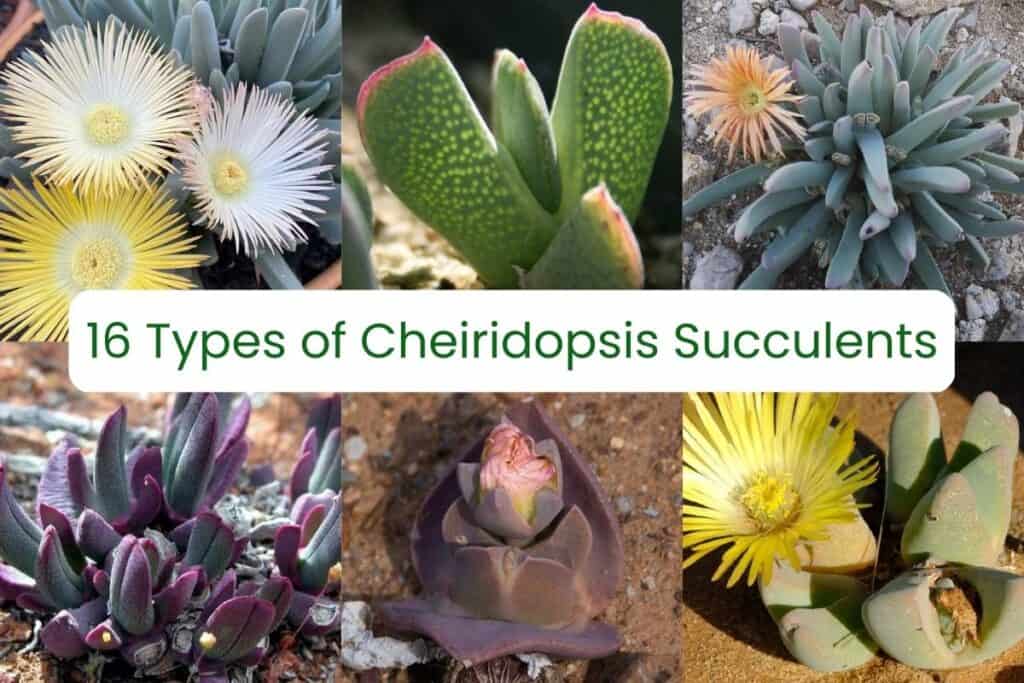
Related Post:
1,000 Types of Succulents With Pictures
Contents
Types of Cheiridopsis Succulents
Cheiridopsis amabilis
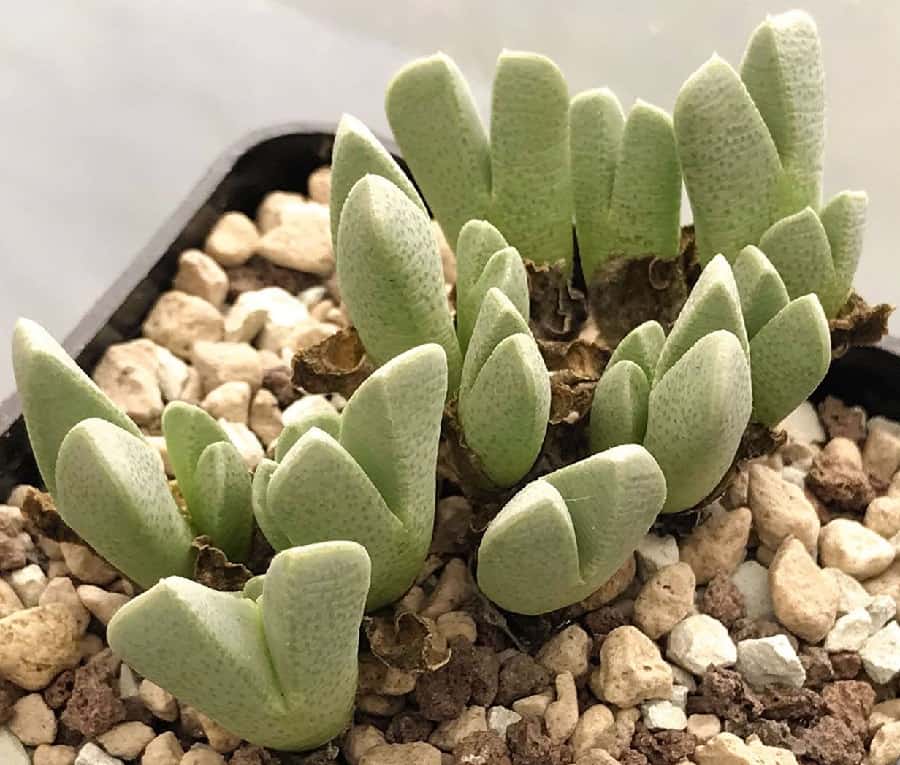
This compact cushion-former has slightly unequal, tooth-edged blue-green leaves that produce pale greenish-white to lemon-yellow daisy-like blooms up to 2 inches wide in late fall. Its resemblance to Cheiridopsis schlechteri makes it highly sought after.
Cheiridopsis brownii
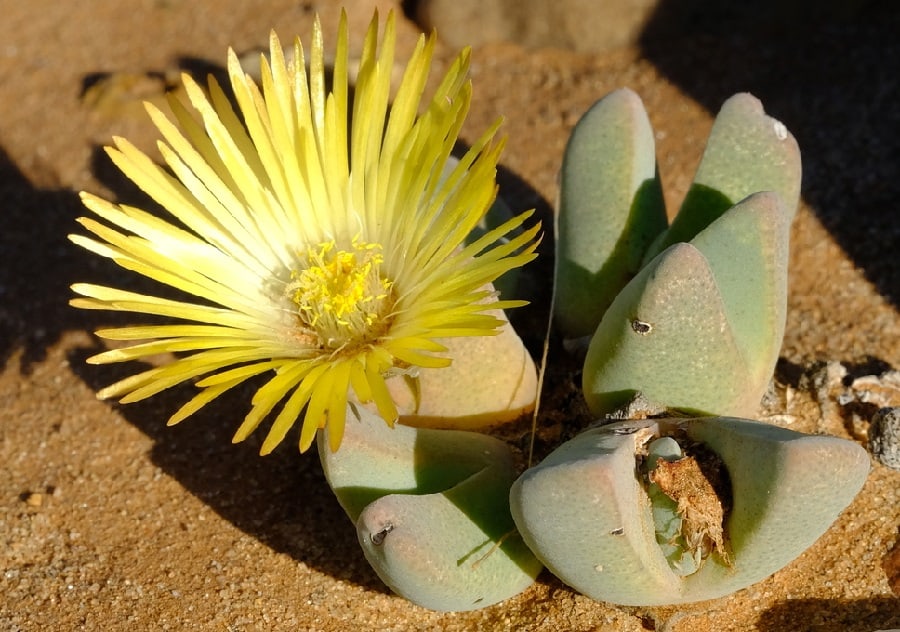
Imagine a mini Lithops forming 2-4 inch wide clumps of plump paired leaf bodies with sunny yellow 2-inch wide blooms popping up in autumn. Its petite size makes it ideal for dish gardens.
Cheiridopsis bruynsii
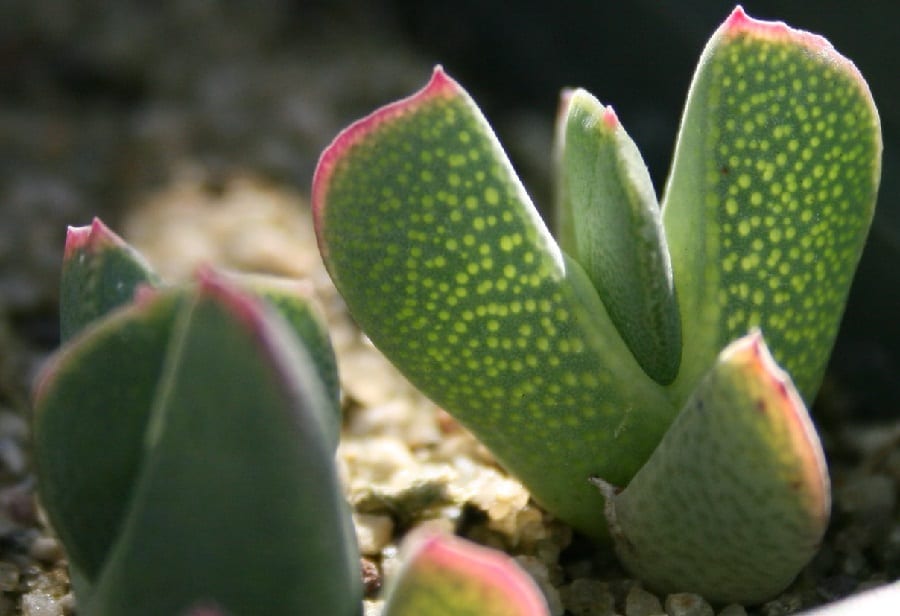
Dainty red-edged toothy blue-green leaves adorn this Lithops-sized stunner that bears cheerful yellow daisy flowers up to 1.5 inches across in late fall. A choice addition to the collectors’ shelf.
Cheiridopsis candidissima
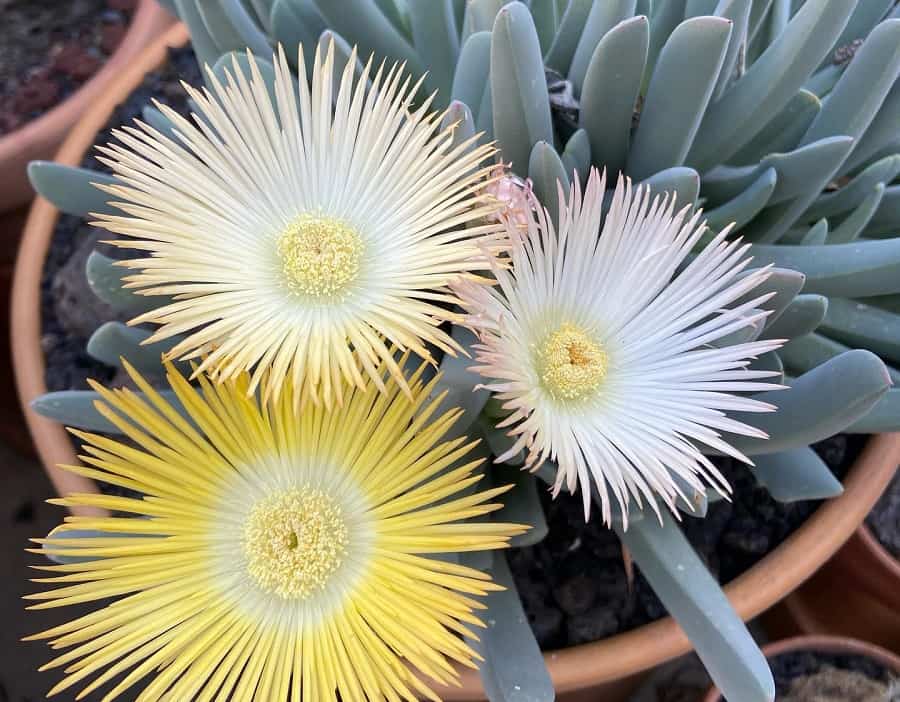
A heavenly ground cover with ultra-smooth whitish-grey to powder blue foliage that blushes pink in full sun. Large 3-inch wide showy white blooms rimmed in orange appear in late winter.
Cheiridopsis caroli-schmidtii
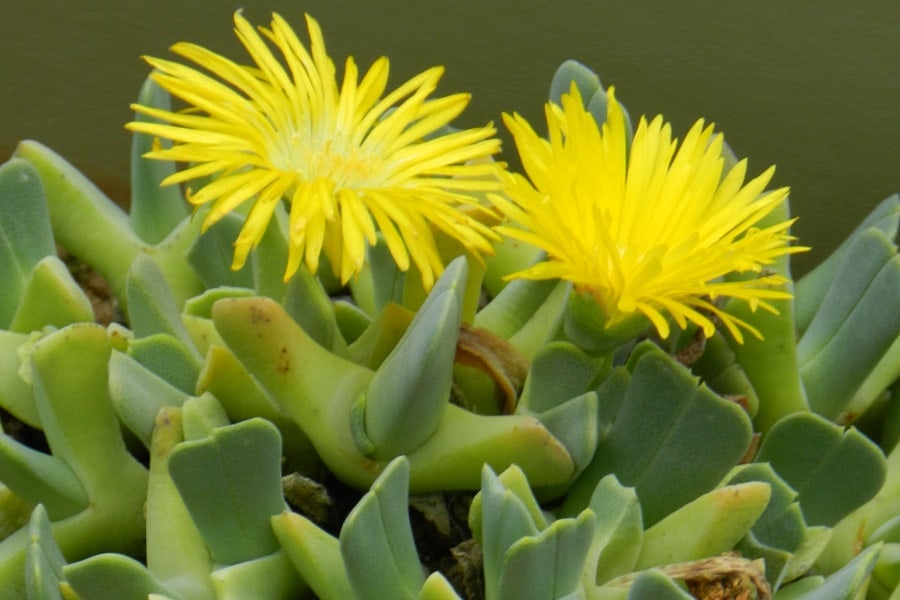
This 2-8 inch tall clumper offsets readily to form mounds of plump blue-green leaves topped with chrome yellow, daisy-like blooms up to 2 inches wide from early winter to spring.
Cheiridopsis denticulata
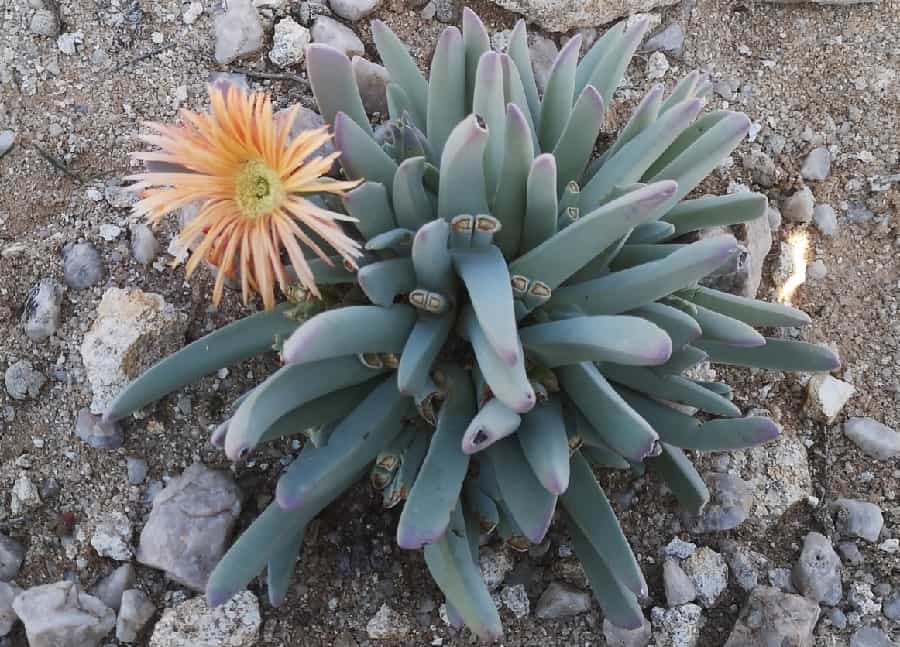
Reaching up to 4 inches tall and 12 inches wide, this robust grower has plump, toothed grey-white to blue-green leaves that blush pink with sun exposure. Cheery yellow, orange or white daisy flowers up to 3 inches wide open in late winter.
Cheiridopsis gamoepensis
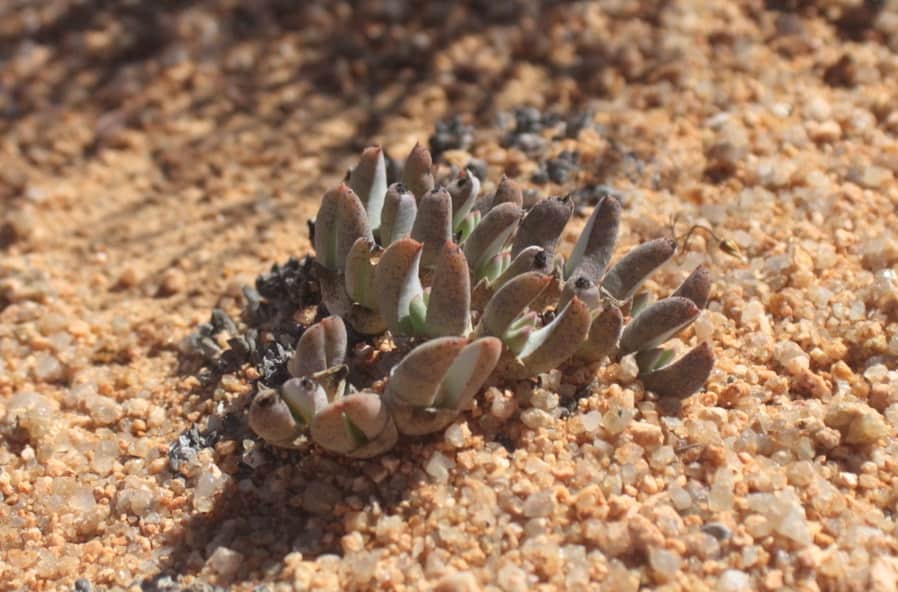
A low-growing mat-former reaching 6 inches tall and trailing to 12 inches wide. Clusters of blue-green leaves give rise to sunny yellow 2-inch wide late winter flowers.
Cheiridopsis herrei

This cute little 2-inch tall cushion-former has tightly clustered blue-green leaves and bears lemony 1-inch wide autumn yellow blooms.
Cheiridopsis imitans
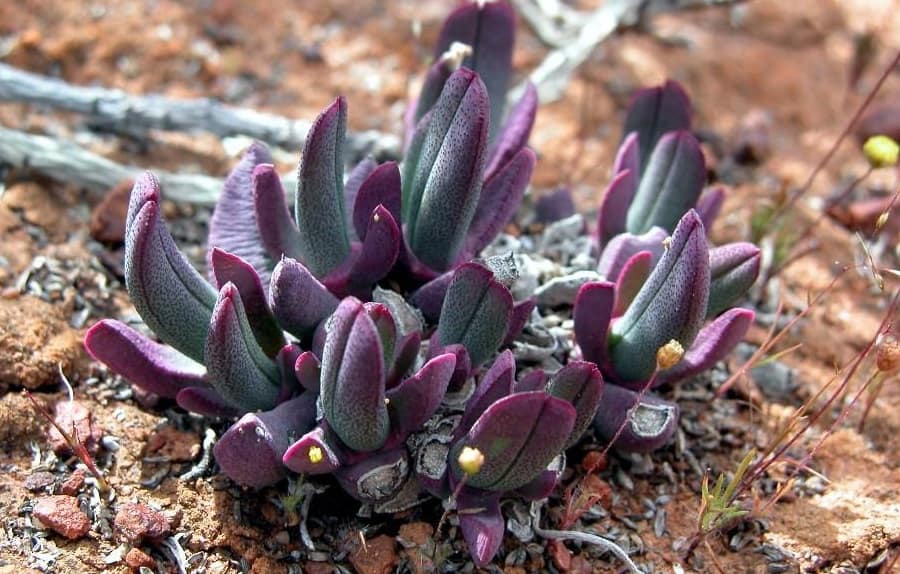
At 4 inches tall and 8-12 inches wide, this clump-forming clustered beauty mimics its larger cousin Cheiridopsis turbinata with bright yellow 2-inch autumn daisies.
Cheiridopsis minor
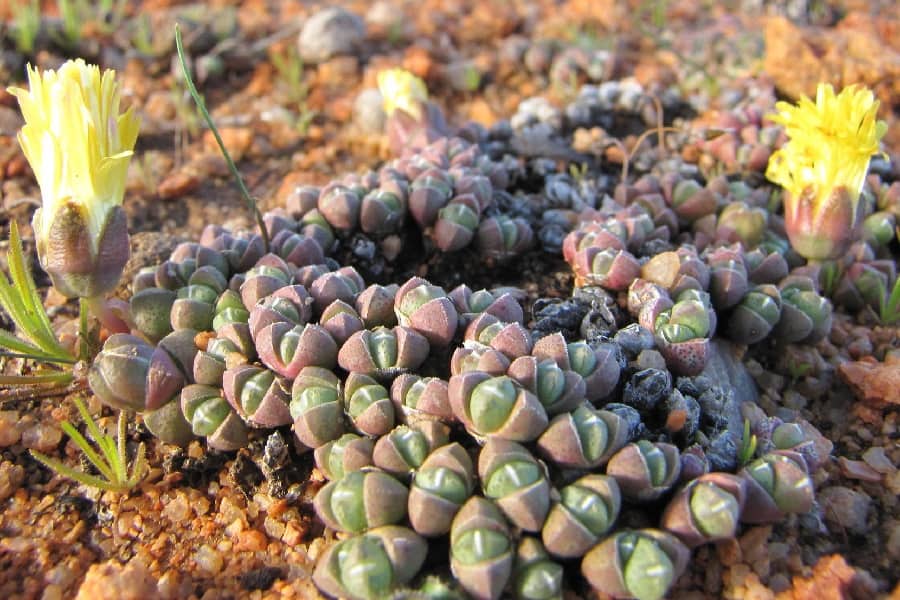
The smallest leaved Cheiridopsis at under an inch tall but spreading up to 6 inches wide, forming tight mats of greenish-grey conophytum-like leaf pairs. A real micro-marvel!
Cheiridopsis peculiaris
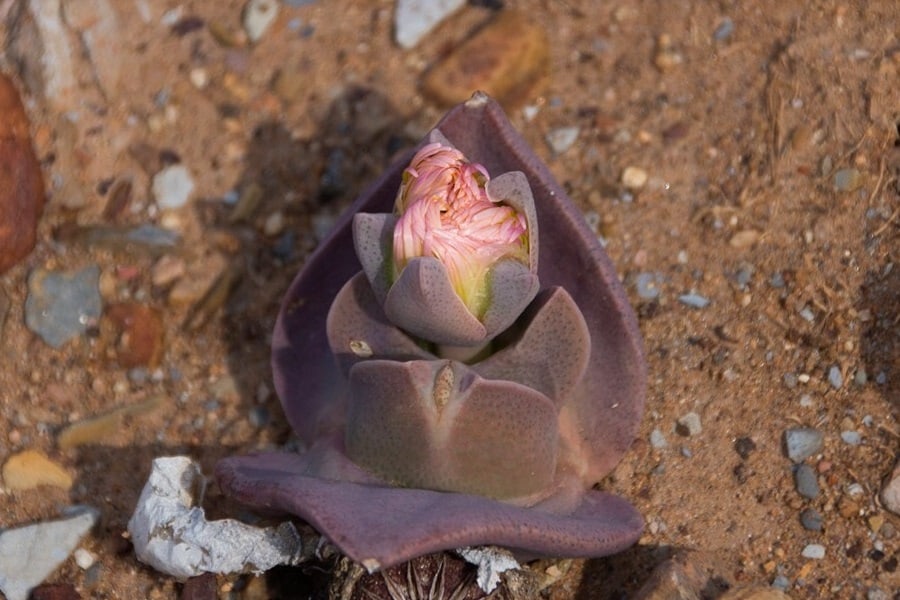
As its name suggests, this peculiar 2-3 branched cutie has plump blue-green dotted leaves and bears light yellow to reddish 2-inch wide daisy blooms. Truly eye-catching!
Cheiridopsis pillansii
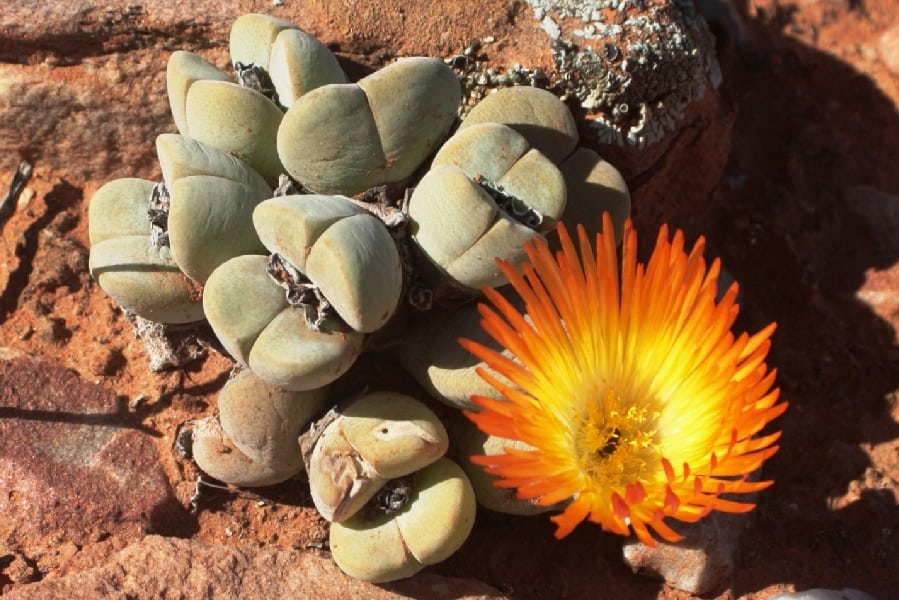
Reaching up to 20 inches wide, this large clumper has sculptural bluish-grey fat leaves dotted with dark freckles and large 4-inch cream, yellow, pink or orange autumn daisy flowers.
Cheiridopsis purpurea
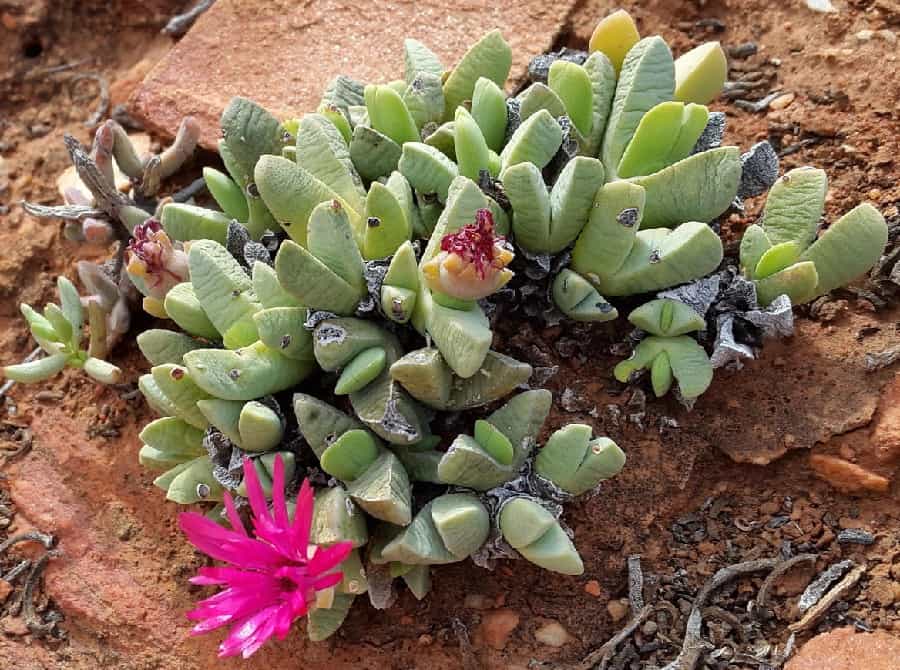
Vibrant 1.5 inch wide magenta pink daisy blooms with yellow centers adorn the tufted silver-green growth of this jewel-toned dwarf shrublet in late winter.
Cheiridopsis robusta
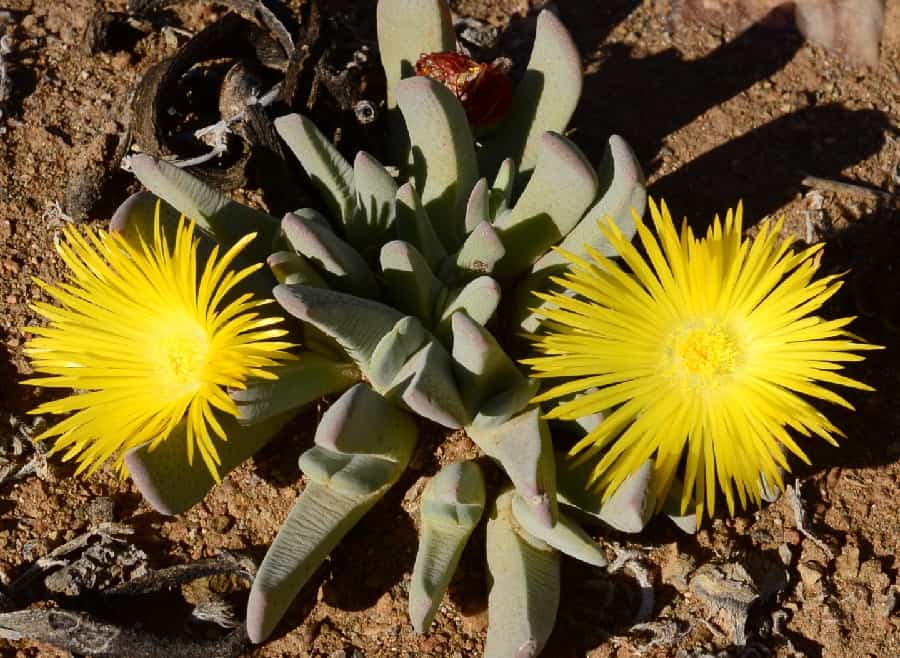
Its name says it all – a robust widespread mat-former with clustered blue-green bodies producing loads of bright yellow (or cream to salmon) up to 2.5 inch wide daisy blooms.
Cheiridopsis rostrata
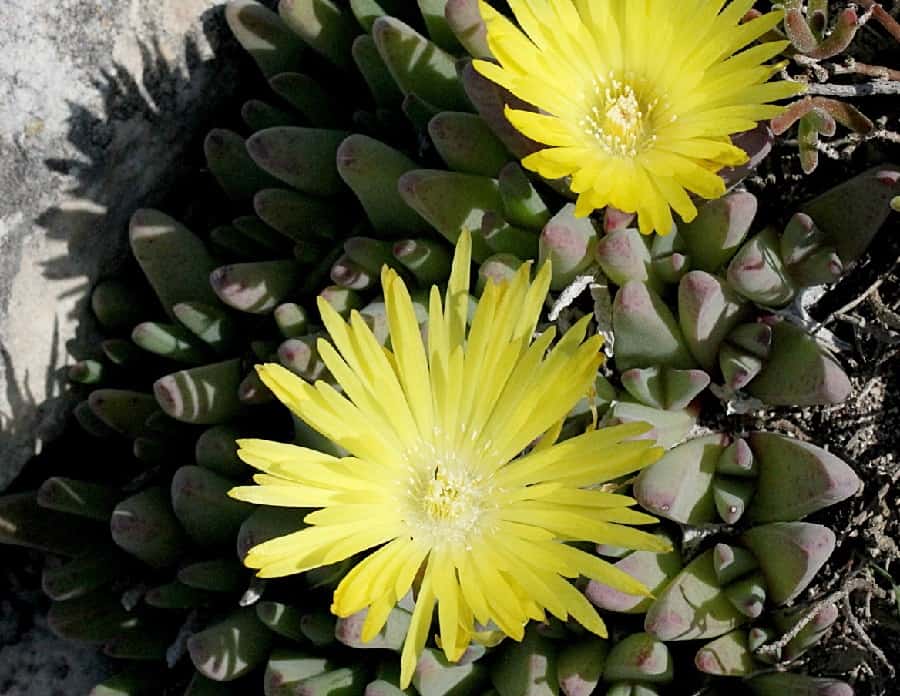
Unusual long upright blue-green to grey leaves form a sprawling 12-inch mat producing cheerful 2-inch yellow mid-winter daisies.
Cheiridopsis verrucosa
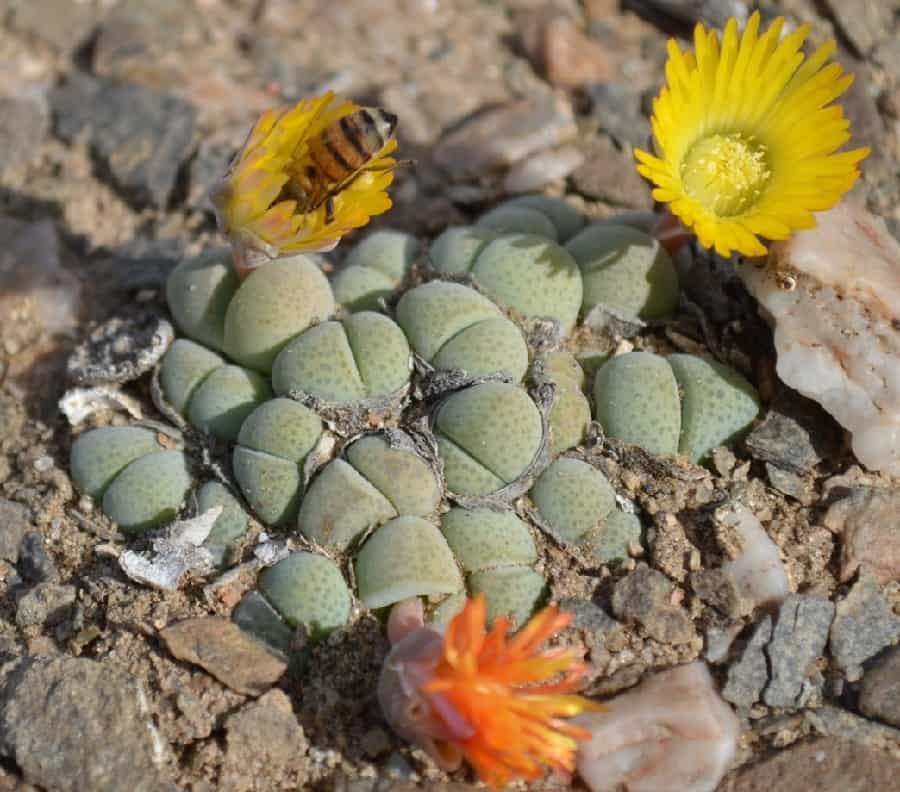
This living stone impersonator has green dotted leaves forming a near-globe that blends into the soil until winter/spring’s arrival when 2-inch yellow blooms appear.
How to Care for Cheiridopsis
Light
Provide full, bright sun exposure or supplement with a powerful LED fluorescent grow light on a 12-14 hour cycle during winter’s shorter days. These sun-lovers hail from Africa’s semi-deserts and thrive in bright conditions year-round. Prevent sunburn by acclimating slowly to more intense light.
Water
As winter-growers, these plants need regular watering every 4-5 days when temperatures are cool in fall through spring, allowing the soil to fully dry before repeating. Cut back substantially once warmth arrives, watering thoroughly only if shriveling occurs. Yellow or dropped leaves indicate overwatering.
Soil
Well-draining gritty succulent mix is ideal for Cheiridopsis – look for commercially available cactus/succulent soil blends or amend standard potting mix by adding 30-50% minerals like perlite, pumice or chicken grit for improved aeration and drainage. An unglazed clay pot also aids in wicking moisture.
Fertilizer
Feed every 4 weeks during winter/spring growth with a balanced controlled-release fertilizer formulated for succulents and cacti like 20-20-20. Foliar feeding with kelp, fish emulsion or compost tea also provides nutrition.
Temperature and Humidity
Tolerant of average household conditions with definite winter/summer cycles. Provide cooler temps of 40-60°F in winter with modest humidity while warmer 70-90°F temps and lower humidity suits their summer dormancy. Avoid freezing temps and high ambient moisture.
Pests and Problems
Generally resilient, but watch for common indoor pests like mealybugs or fungus gnats which can be removed manually and treated with insecticidal soap/oils or beneficial nematodes respectively. Rot, edema or desiccation are caused by improper watering.
Pruning
Not typically needed unless shaping overgrown clumps – use clean sharp pruners and let wounds callous over before watering.
Potting and Repotting
Accommodate horizontal growth and repot every 2-3 years in late winter using an unglazed clay or ceramic pot with ample drain holes. Avoid deep containers and use a very gritty, porous soil mix.
Cheiridopsis Propagation Methods
One of the best ways to expand your Cheiridopsis collection is by propagating new plants from seed, leaves or cuttings. These plants readily produce offsets and can be easily multiplied with a little time and patience.
From Seed
- Use a well-draining seedling mix and shallow container
- Moisten the soil mix and let it drain
- Sprinkle seeds on the surface and gently mist to set them
- Cover with plastic wrap or glass to maintain humidity
- Provide bright light and bottom heat of 70-85°F to aid germination
- Remove cover once sprouts appear and mist regularly
- Allow seedlings to develop their winter leaf pair before potting up
From Leaf Cuttings
- Use a sterile sharp knife to remove thick lower leaves in early fall
- Allow cuttings to callous for 7-10 days before planting
- Prepare a well-draining gritty cactus/succulent potting mix
- Stick the callused cuttings vertically into the mix and barely cover the base
- Place in a warm spot with bright light but avoid direct sun
- Carefully mist around the cuttings when soil is completely dry
- Roots and new leaves should emerge within 4-6 weeks
From Stem Cuttings
- In early fall, use a clean knife to cut off stem sections with leaf pairs
- Allow the cuttings to callous over for 7-10 days before planting
- Plant the callused cuttings vertically up to the leaf bases
- Provide excellent drainage and bright indirect light
- Water only after roots have developed in 4-6 weeks
With the right conditions, these prolific little plants will quickly generate new offsets to share or expand your collection. Propagating is also a great way to back up rarer varieties.
